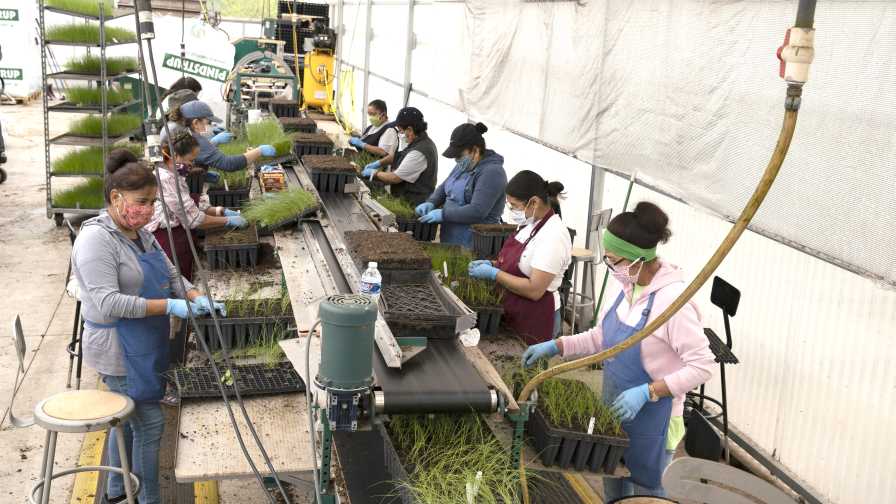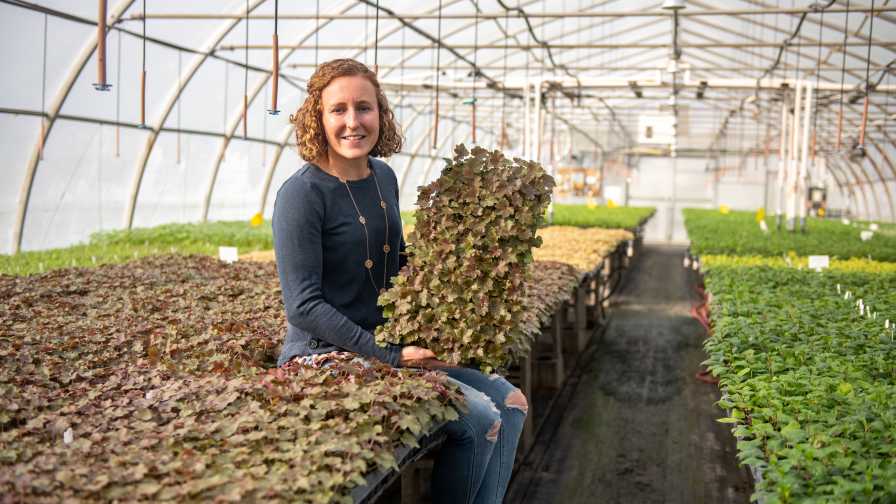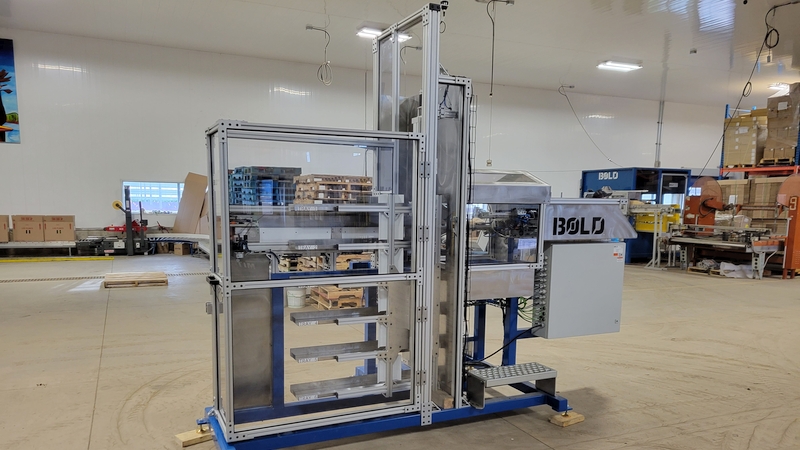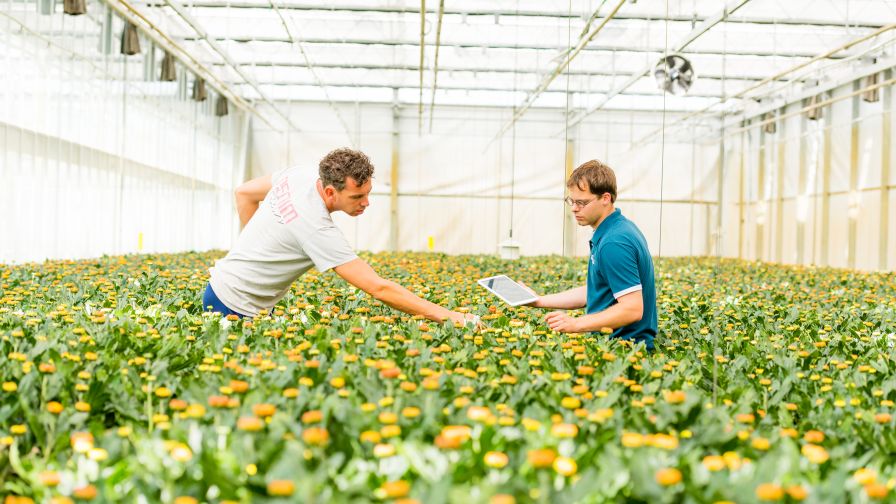This Month’s Cover Story: Two Leading Growers on the Power of Plant Certification

Every employee at North Creek Nurseries, from growers to cutting crews to shipping and sales members plays a role with SANC program compliance. Photos: North Creek Nurseries
Being able to show your customer and your industry partners what you are doing to reduce pest risk and improve plant quality can go a long way in building trust. Certification is one of the best ways to concretely build that trust.
One certification that is gaining more attention is the Systems Approach to Nursery Certification (SANC) program. This voluntary audit-based program, administered through the National Plant Board, can be tailored to different types of greenhouses. The SANC concept was developed with participation of more than 20 state agencies and several industry and academic representatives. It was tested with a pilot program involving 18 facilities in 14 states, and since early 2019, facilities across the country have successfully completed the SANC certification process.
Two of these operations are North Creek Nurseries in Landenberg, PA, and D.S. Cole Growers in Loudon, NH. Greenhouse Grower reached out to Madeline Maynor, Greenhouse Production Coordinator at North Creek, and Chris Schlegel, Head Grower at D.S. Cole, about why they entered the SANC program, what they had to do to get SANC-certified, and what they learned along the way.
Why They Got Involved
At North Creek Nurseries, Maynor says the growing team was looking for a way to make everyone’s job easier, and SANC was the perfect fit.
“By documenting and detailing out each process, we wanted to ensure quality each and every time,” Maynor says. “Once a process is detailed out, everyone can follow it from start to finish, like a recipe. By setting standards throughout the nursery, we hoped to produce better plants.”
Over at D.S. Cole Growers, Schlegel says the company was seeing a rising number of state-specific regulations involving plant shipments D.S. Cole ships to several U.S. states and into Canada, so the SANC Program seemed like a logical step to take because it focuses on best management practices that reduce pest risk throughout the production cycle.
“We thought this would assist us in state-to-state shipping by focusing on reducing pest and disease risks and eventually allowing a more uniform approach to the interstate shipping regulations,” Schlegel says. “We also felt the program would help us produce the highest quality plants by identifying and managing pest and disease issues and targeting areas for improvement. Quite simply, it would indicate our commitment to quality.”

Madeline Maynor, Greenhouse Production Coordinator at North Creek Nurseries, has led the Systems Approach to Nursery Certification process at North Creek. It started by breaking down how product moves through the facility, from incoming plant material to production practices and grow-ing, to shipping.
A Step-by-Step Plan
Once each company made the decision to become SANC-certified, the process was similar. It starts with meeting with your state certifying authority (a list is available at NationalPlantBoard.org/membership) to discuss your interest. From there, the first major step is a risk assessment, which looks at each process at an operation, identifies risks, hazards, and critical control points, and determines best management practices to limit or stop issues.
“The risk assessment process is the most intensive step,” Maynor says. “You need to detail out each process from start to finish with precision and set standards in place that meet the best management practices in the industry.”
North Creek started by breaking down how product moves through the facility, from incoming plant material to production practices and growing, to shipping. At each point, it looked for hazards and critical control points where pest/pathogens could be introduced. For every process, the company documented work standards that accompanied best management practices to avoid or mitigate any risks/hazards.
From there, the state certifying authority reviews the risk assessment and offers feedback and recommendations. The risk assessment and any necessary changes are then used to create a facility manual that contains a pest management plan, a staff and facility structure, audits, and documentation.
The facility manual can be pretty involved for companies like D.S. Cole Growers, which was trying to cover requirements for both the SANC program and the U.S.-Canadian Greenhouse Certification Program.
“I sent each section to our certifying authorities for review as I completed them,” Schlegel says. “Our certifying authorities added information from each section to appropriate areas and created an index that clearly showed where requirements of each program were included.”
The last step is an audit process, which verifies that the procedures identified in the facility manual are being followed. Once a company is approved and has signed the SANC agreement, the certification is complete.
Why Buy-In Is Critical
Within your organization, there are several other steps that should also be taken.
“You need company-wide buy-in for SANC to work, because every employee, from growers to cutting crews to shipping and sales members all play a role with SANC compliance,” Maynor says. “Through the entire process, I met with team members and provided specific training on how their job relates to SANC.”
This sense of ownership, which extends to new employees who are trained on SANC on their very first day, is both critical and helpful, says Maynor, who notes the North Creek growing team has become hypersensitive to crop issues and how they can fix them.
For Schlegel, implementing SANC has helped D.S. Cole Growers look more closely at its organizational chart and clarify to whom each employee reports. The company has also become better prepared in having necessary records available, as well as recording pest detections and control measures.
“We are documenting more training sessions,” Schlegel says. “For example, every employee who is likely to bring pallets of material into the greenhouse facility is required to check for signs of gypsy moths. We have information that we review with all these employees, and we have them sign and date to confirm that they received the training.”
Better Plants, Better Processes
Both Maynor and Schlegel say the benefits of becoming SANC-certified quickly came to light.
“By documenting and detailing out each process, we can ensure quality every time because everyone follows the process from start to finish,” Maynor says. “By setting standards throughout the nursery, we are producing better plants. We have less crop failures, less rework, and less time wasted fixing issues.” On the flip side, Maynor says North Creek can ensure better crops to stick on the production line, better propagation success, and better pest control.
“Overall morale is better when things are going well right from the start,” she says.
Schlegel lists a host of benefits as well:
- “Having external audits adds credibility when we request that employees follow specific protocols included in the pest management plan. It helps to have an outside authority reiterate the need to follow the protocols.”
- “Having new sets of eyes during the audits helps to find items we may have overlooked (small spots of weeds, cracked glass, or standing water due to clogged drains).”
- “Having regular meetings with the New Hampshire Department of Agriculture, Markets, and Food keeps us updated on pest issues in our state and beyond.”
- “The pest management plan has caused us to make scouting and sticky card deployment more of a priority, even during the busy seasons.”
- “We now have more input from all departments regarding pest and disease issues since we have put more emphasis on training throughout the company. The growers appreciate this input since we can treat problems early and avoid larger issues.”
- “Early detection has made our IPM program stronger and our use of biological controls more effective. This has reduced chemical use, which is beneficial on so many levels.”
- “Sanitation has become a top priority, and there is more involvement from all departments since they understand better why this is so critical.”
- “The self-inspections have proven to have an added benefit for us: They are good spot checks to make sure our pullers are checking trays thoroughly for quality and missing cells.”
Lessons Learned
Participating in the SANC program should not require too many changes to your company protocol and workflow, but it does require involvement from everyone in the company.
“The importance of employee training cannot be emphasized enough,” Schlegel says. “It’s also important to set realistic expectations and goals, and communicate frequently.” It also helps, according to Schlegel, to consider completing the risk assessment during a slower time of year, as it can be a time-consuming process.
The four rules Maynor follows are 1) set standards, 2) document processes, 3) train, and 4) retain.
“We all know growing plants and managing pests isn’t always linear, but if you have the best possible standards in place, it makes growing plants a lot easier, for the plants and the people,” Maynor says.
Finally, if you have questions or want to get involved, reach out to fellow industry members.
“Individually and collectively as an industry, we have a wealth of information to share,” Maynor says. “The more companies that are SANC compliant, the better plants we produce, and the better we become as a whole.”
5 Things You Need to Know About the SANC Program
Dana Rhodes is a State Plant Regulatory Official with the Pennsylvania Department of Agriculture, and Chair of the Systems Approach to Nursery Certification (SANC) Governing Board. Below, Rhodes shares five things interested growers need to know about SANC and how it could benefit them.
- Employee ownership and reporting problems: Employees trained to look for pests and to safeguard the processes for production have more buy-in with the company and the overall health of plants. SANC requires training for scouting and reporting pests. It also empowers all employees to say, “This plant does not look right. I think there is a problem.” They don’t have to know what the problem is, but SANC provides the network and identification of whom should receive these reports. Many companies in SANC have described the positive feedback provided by employees who feel good in speaking up and also knowing who is responsible as an employee.
- Verification of process (internal and external audits): Many companies have processes for daily operations; however, many do not have them written down. SANC captures this knowledge and then requires that companies verify they are actually following their own processes. Companies have reported that one person may have the entire production process in their head, and when they are not there due to illness or vacations, problems arise. Capturing the information provides steps to identify areas of improvement. It also provides accountability. Internal audits are conducted by the growing facility. Sometimes management believes that a nursery process is being utilized, only to discover parts have been forgotten or dismissed.
- Tailored for your business: SANC does not dictate that a certain process must be used by all facilities. It has established program standards that must be met. This allows facilities to be flexible in which Best Management Practices (BMP)s they select to mitigate a Critical Control Point (CCP) they identify during their Risk Assessment. Many types of growing facilities have been certified through SANC. There are participants operating as greenhouses, field-grown nurseries, pot-in-pot production, etc.
- Positioning for the next pest: By implementing a systems approach to managing critical control points with BMPs, growers are safeguarding against multiple pests at one time. This approach works well for disease and pest pressures and can effectively prevent an unknown pest from being introduced. It also allows for smoother transitions if a new pest is identified and a quarantine is implemented.
- Relationship building for states with growers: State departments of agriculture (state certifying authorities) and growers build stronger working relationships going through the SANC certification procedures. Regulators better understand the entire process of how plants are produced at their facilities. Receiving states understand the process a facility must go through to be certified a SANC operation and have more confidence that the plant material being sent is healthy and apparently free of pests. Growers work more closely with inspectors to know about changes in regulations and new pests of concern on the horizon.










